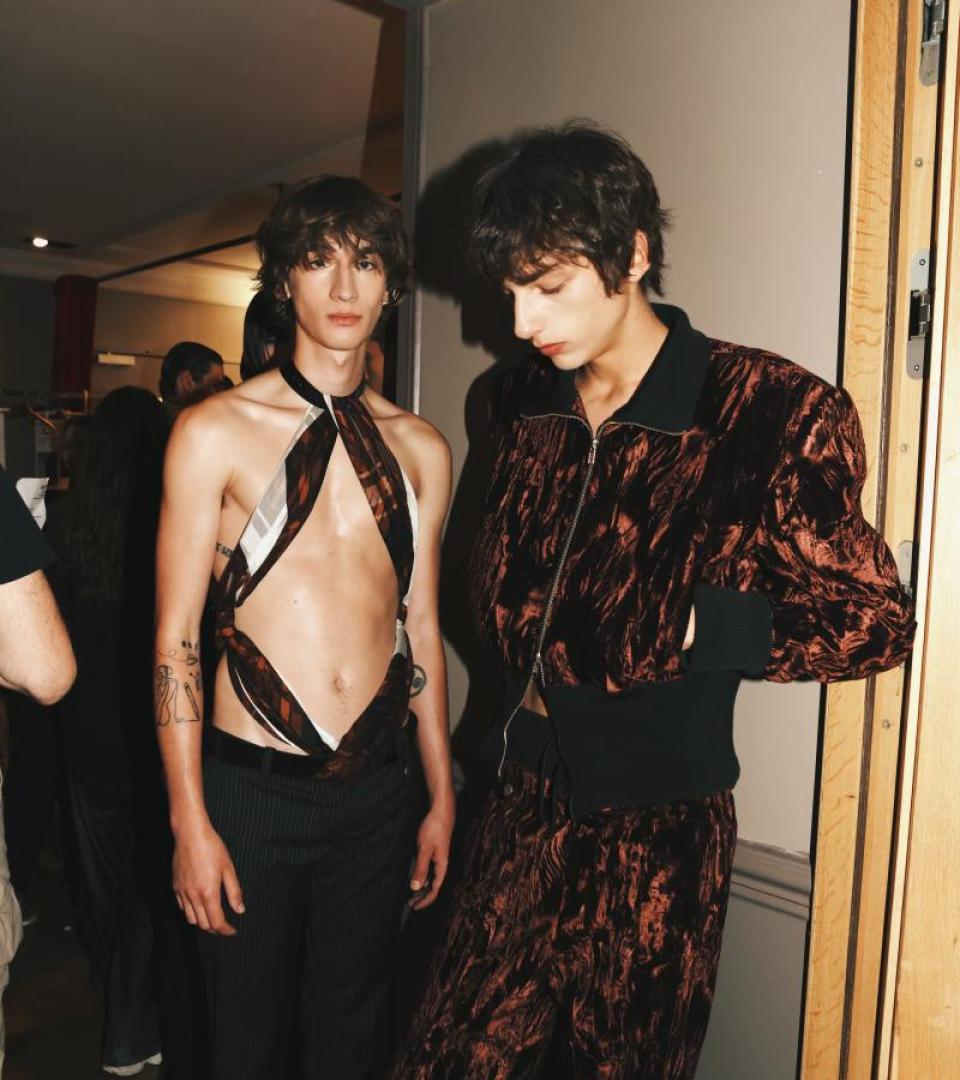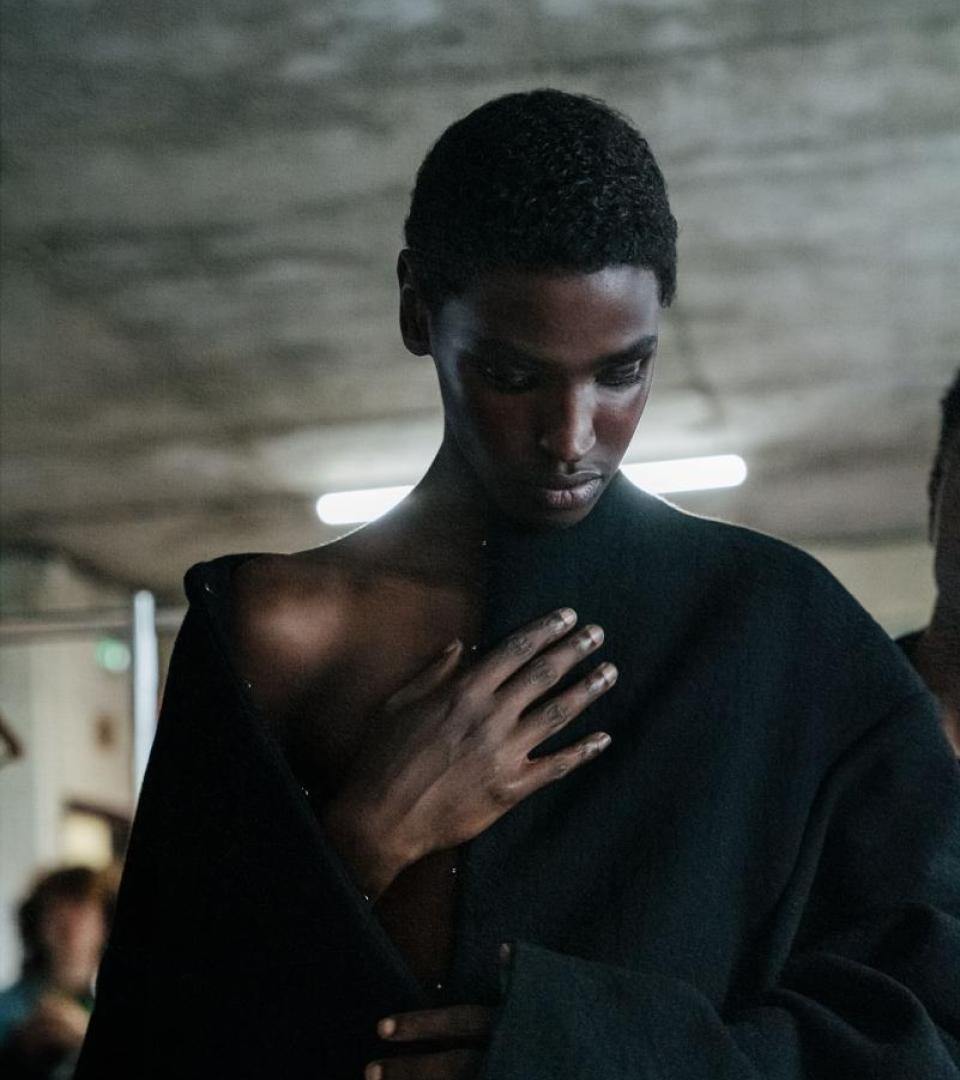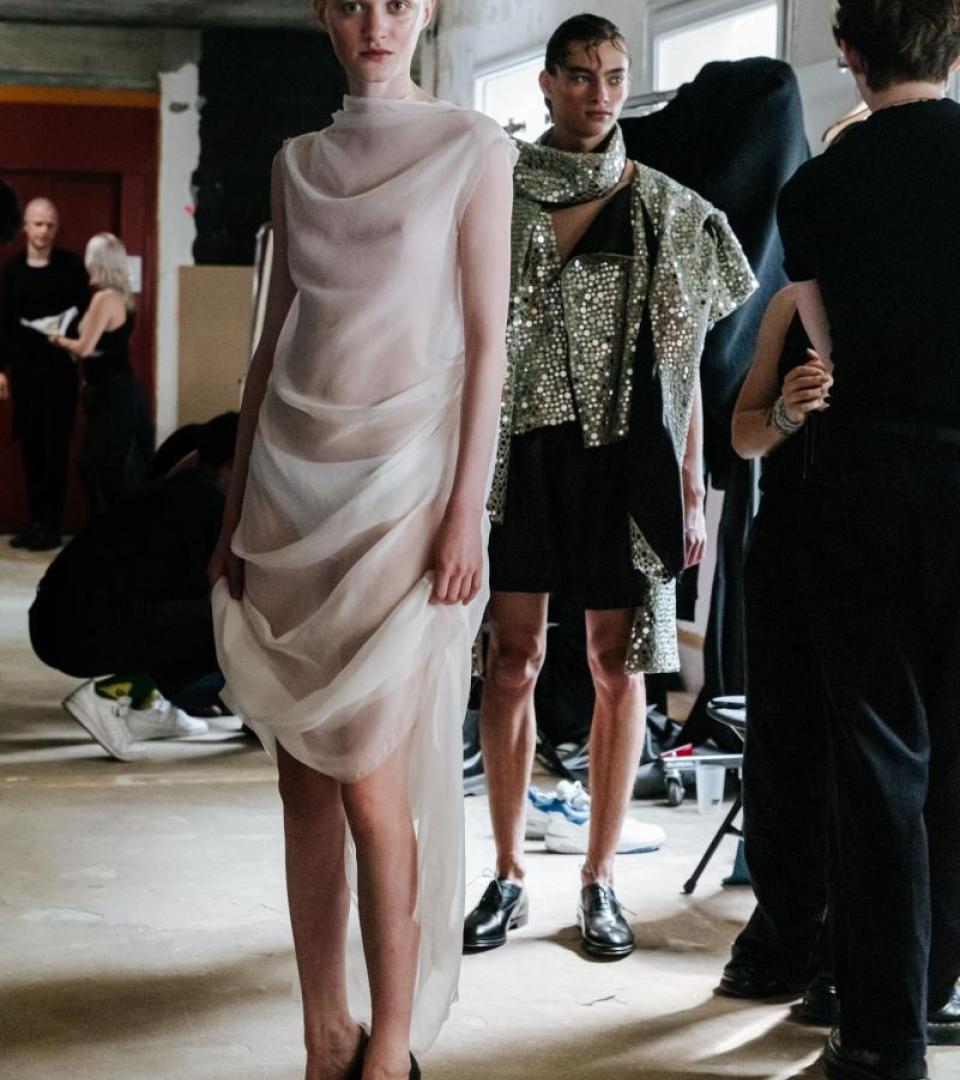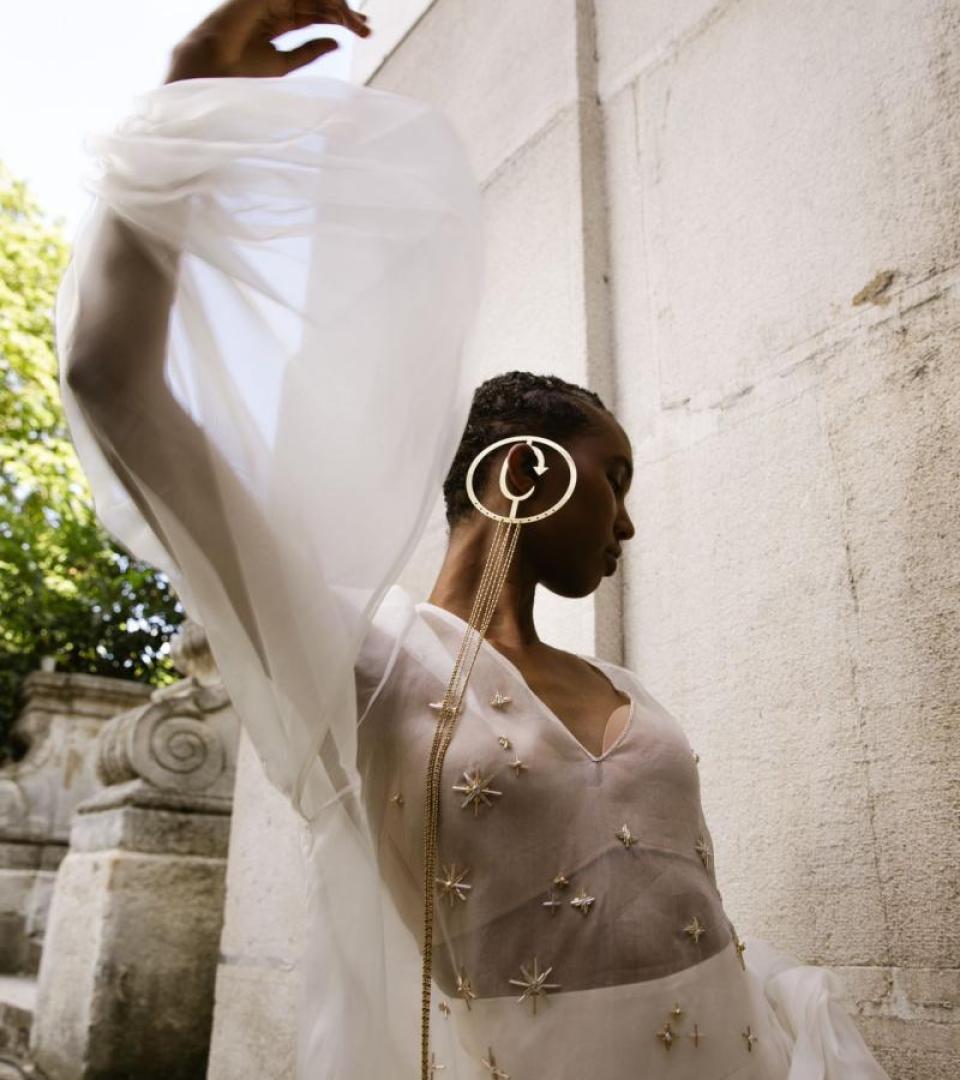While C.R.E.O.L.E's influences recall historical social, cultural, and political movements, the output is rooted in a contemporary wardrobe that revolves around principles of workwear. He deploys humble fabrics like cotton poplin, jersey, and denim. Meanwhile, the palette reflects Pan-African colour codes like red, green, black, and gold, while browns pay homage to marronage, the act of enslaved people fleeing colonial systems. He used AI to reimagine childhood photos, portraits of his grandparents’ wedding, and images of his mother as a baby. Outré looks like a beaded jersey inspired by childhood friendship bracelets and ornamental speedos round out the offering, evoking Creole sensuality.
On a video call from his Paris studio, Frederic-Colombo explained, “It was a strong and innovative time for people to be conscious of their identity. How much they feel queer culture has to be preserved, and how we would like to be considered as independents by the French government. It’s still a topic today for people from the French Caribbean.”
What would you like us to know about this collection?
This season, I explored BUMIDOM which was a political movement where people emigrated from French overseas territories in hope of a better future with better opportunities. It’s about this socioeconomic illusion and disillusion people [from overseas territories] have with France, seeing it as this better place for everything. But, still, you have a lot of social crises. But I wanted to have a funny joke in it with the name of the collection, ‘Dom Top Fever.’ DOM-TOM was the French administrative term for their overseas territories.
It’s interesting to spotlight this period of Caribbean culture because it’s when our culture started to rise through French culture through our diaspora – art, music, style, how we think. Caribbean and African thinkers started to write books, poems, and songs, about the condition of Black people in Europe and to consider what it means to be a Black person outside of where you come from.
What other elements are at play in this collection?
The soundtrack adds layers to the narrative. It’s not just about having something bouncy for the catwalk but something that makes sense – sometimes in Creole, sometimes in English – depending on my mood. I collaborate with a producer every season to bring it to life. [Music] is completely integrated in the design process. [This season,] we have developed some new songs based on classical stuff.
You are one of the only Caribbean designers reflecting Caribbean culture on the schedule. What does that mean to you?
It’s an elite position to be part of this calendar. I’m one of the rare ones to fully develop something about the Caribbean with a French voice. I was born in Paris, but I grew up in the Caribbean. I know the place, I know the people. I look to them for so many different things. I’ve always been interested in history and this gives me an opportunity to know more about that, even before colonialism. It’s part of my identity, and I’m glad to have this knowledge. Sometimes you see people talk about these islands but they’re showing that vision for people who just want to come as tourists but that misses the soul of the people who are from here. I have this sensibility that brings together local details and history with a contemporary one to create a new wardrobe.
If you have a brand, you need to have a cultural aspect: to be connected to people, to be connected to communities, and to build communities. You have to be honest because there are so many trendy brands out there that feel too focused on the commercial aspect. What I do is not something that people might expect from the Caribbean or Creole culture but it’s interesting to bring these references [to fashion].
This interview has been lightly edited.



